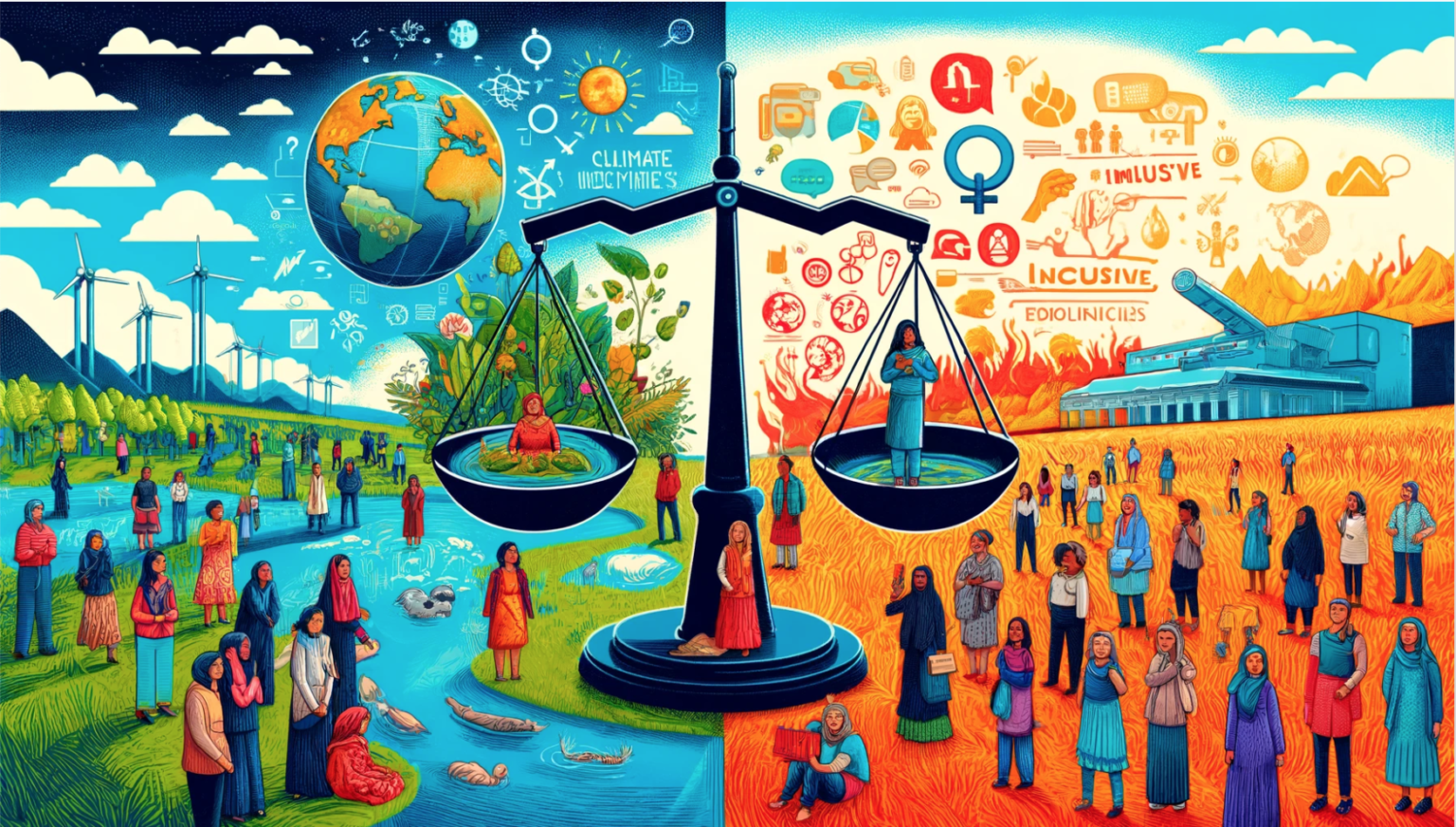Climate change affects men and women unequally, exacerbating women’s vulnerability due to traditional gender roles.
The adverse effects of climate change are becoming increasingly evident, manifesting themselves in long-term changes in average temperature, variations in the intensity and distribution of precipitation, and increases in the frequency and severity of droughts and floods.
These impacts are widespread, but not evenly distributed. Certain social groups, such as women, are disproportionately at risk due to a complex interplay of social, economic and cultural factors.
Therefore, in this article we will examine how climate change specifically affects women, highlighting their particular vulnerabilities and how these impacts vary in different regions of the world.
The gender gap linked to the climate crisis is one of the greatest challenges of our time. It threatens the lifestyles, livelihoods, health, safety and security of women and girls around the world.
What do the studies say?
Throughout history, climate change scientists, researchers and policymakers have struggled to make the crucial connections between gender, social justice and the climate crisis. However, as more data has been collected and research has been conducted, these links have become clearer.
Recent studies, such as the article by Valero and Kau (Gendered Impacts of Climate Change), offer country-specific perspectives on how women’s lack of access to and control over basic resources exacerbates the impacts of climate change and weakens their ability to cope.
For example, in India, child marriage rates increased following extreme rainfall events, while in Bangladesh, more dry months significantly increased these rates. The study also found that droughts negatively affected the body mass index of rural Zimbabwean women, but not men.
In her master’s thesis on gender and climate change, researcher Núria Araújo Neves emphasises that the effects of climate change affect men and women differently because of different gender roles, which influence values, attitudes and decision-making power with regard to natural resources and environmental protection.
Neves points out that women have traditionally been responsible for water, food and waste management in their families, but rarely have access to public office or meaningful political participation. This marginalisation of their needs and views in resource management decisions translates into specific vulnerabilities for women, exacerbated by economic inequality that limits their ability to adapt to climate change.
For example, women often earn less than men, making it difficult for them to adopt new agricultural techniques or purchase modern equipment needed to meet climate challenges.
Moreover, as the primary managers of their families’ livelihoods and environmental management, women are further disadvantaged by a lack of recognition of their knowledge and adaptive capacity. Neves’ gender analysis shows that traditional roles, lower wages and less access to resources such as credit and land make women more vulnerable to the climate crisis.
The results of these studies suggest that climate change-related factors are associated with gendered outcomes in all countries considered.
Specific vulnerabilities
The climate emergency is a ‘threat multiplier’, exacerbating social, political and economic stresses in fragile and conflict-affected environments. As the climate crisis fuels conflict around the world, women and girls face increased vulnerability to all forms of gender-based violence, including conflict-related sexual violence, trafficking, child marriage and other forms of violence.
First, they have limited access to economic and political resources, which reduces their ability to respond to disasters and environmental crises. In addition, domestic responsibilities, such as caring for children and the elderly and managing household resources, often fall to women. This not only limits their mobility to escape natural disasters, but also increases their burden when resources are scarce.
When disasters strike, women are less likely to survive and more likely to be injured because of long-standing gender inequalities that have created disparities in information, mobility, decision-making, and access to resources and training. In the aftermath of a disaster, women and girls are less able to access aid and assistance, further threatening their livelihoods and well-being.
All of these situations exacerbate existing gender inequalities and pose unique threats to their livelihoods, health and safety.
For example, in agriculture – one of the main areas of female employment in many developing countries – women are often the most affected by droughts or floods, as they are directly dependent on natural resources for their livelihoods and food. Climate change exacerbates these conditions, exacerbating existing inequalities and creating a vicious cycle of vulnerability to future disasters.
Conclusions:
The studies highlight the urgent need to address climate change from a gender perspective. The unequal impacts faced by women due to gender roles and marginalisation in natural resource decision-making highlight the complex intersection of social, economic and cultural factors that exacerbate their vulnerability.
Recent studies, such as those by Valero, Kau and Núria Araújo Neves, reinforce the link between gender inequality and women’s reduced capacity to respond and adapt to climate challenges.
It is therefore imperative that climate policies take into account and address these gender inequalities, promote the inclusion of women in all stages of decision-making, and ensure that their needs and knowledge are recognised and valued. Only in this way can we build an effective and equitable response to the climate crisis that protects and empowers women, thereby strengthening the resilience of entire communities.
Complementary activities
1- Watch the video of CNN ‘Four reasons why women are more affected by climate change’
2 – Read the article published by UN Women ‘Gendered Impacts of Climate Change’ – written by Sara Duerto-Valero and Sneha Kaul -.



